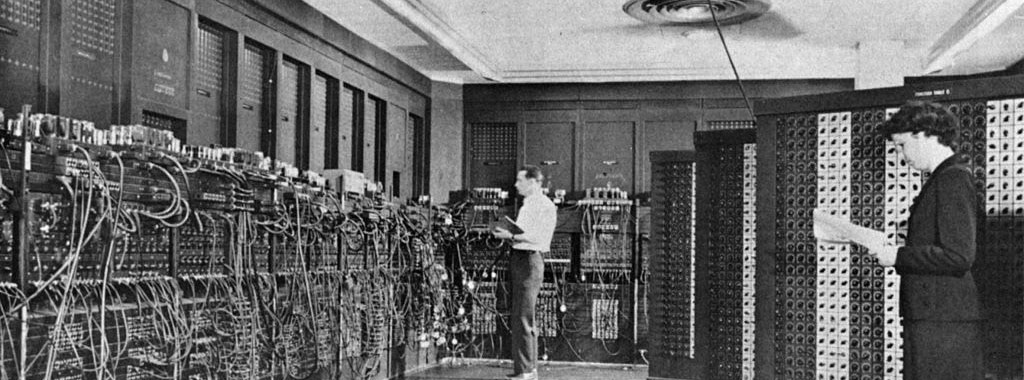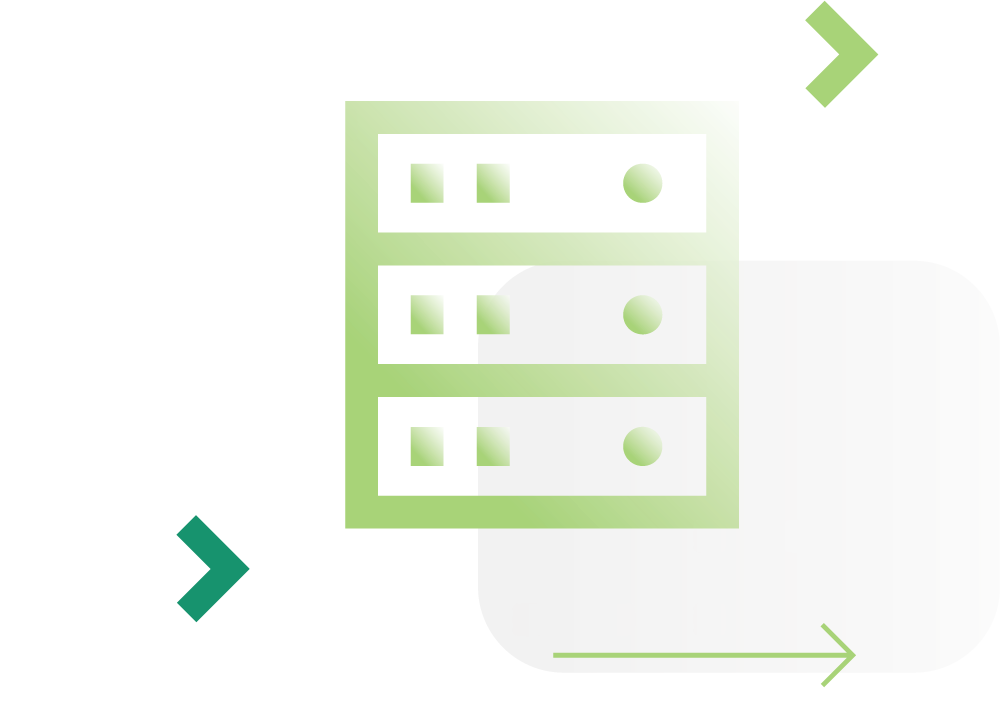BLOG
The latest in infrastructure, technology, and security
From emerging innovations to real-world applications, we cover what helps leaders navigate complexity, drive transformation, and make smarter decisions in a rapidly evolving landscape.
Enhance your data center infrastructure with tailored solutions that boost performance and efficiency, ensuring rapid growth and exceptional customer experiences.
Fortify your operations with comprehensive cybersecurity solutions that deliver resilient protection and end-to-end risk mitigation.
Align your cloud strategy with your business objectives through our end-to-end managed services, delivering expert oversight across infrastructure, data optimization, and cost control.

Adopt the cloud confidently with expert guidance on capacity, cloud-native technologies, and a step-by-step path for successful migration.
Energize your software development lifecycle with tailored DevOps to match your needs and workflows.
Successfully adopt advanced analytics capabilities to unlock insights, inform the design of your products, and make smarter decisions.

Leverage Artificial Intelligence to generate actionable insights, uncover new revenue opportunities, and drive more informed decision-making.

Modernize your applications with advanced development methodologies, driving greater agility, efficiency, and continuous innovation to excel in today’s competitive environment.
Let our experts save you time, money, and stress as you explore solutions. Talk to an expert today!
How to gain speed, increase agility, and control costs by modernizing the platforms that run your workloads.
Beyond just the evolution in technology—processors becoming faster, network speeds exponentially increasing, and improved data performance—enterprises today are increasingly relying upon the cloud in some form or fashion for their computing and data capacity needs.
This sea change in how enterprises can now handle their application workloads is not without its challenges.
Organizations still relying on legacy applications and infrastructure, for example, are often disrupted by startups arriving free from technical debt.
Meanwhile, infrastructure and operations teams are being tasked more and more with delivering solutions that support advanced technologies and create a cloud-like experience without breaking budgets. And they’re being asked to do it at an accelerated speed.
On this page, you will find what you need to know about modern enterprise infrastructure—what makes it modern, how to achieve elite performance, and the path to modernizing your infrastructure.
Click a link to jump to that section
During World War II, the Electronic Numerical Integrator and Computer (ENIAC) was constructed in the basement of the Moore School of Electrical Engineering at the University of Pennsylvania.

Considered the world’s first datacenter, ENIAC consisted of more than 17,000 vacuum tubes, 70,000 resistors, and 10,000 capacitors, and it was capable of executing a then-blazing 5,000 additions per second.
Obviously, the ensuing seven decades have brought a lot of advances to datacenter technology, but the fundamental raison d’être for the existence remains the same: to provide a platform for the storage of, access to, and the use of information.
While on-premises datacenter solutions are still very much alive and well, a growing number of enterprises are embracing a hybrid or multi-cloud approach with their infrastructure. This agile approach enables innovation and the ability to adopt emerging technologies like DevOps, advanced analytics, artificial intelligence (AI), deep learning (DL), and machine learning (ML).

Setting aside the nuts and bolts of hardware, data storage, and networking, every modern infrastructure provides you with each of these elements:
According to a study conducted by IDC Technologies, compared to those still relying on legacy platforms, organizations leveraging a modern infrastructure are able to:
Beyond these very real gains, enterprises fully leveraging a modernized infrastructure are often able to reduce their CapEx substantially through value engineering and the adoption of open-source technologies.

Modern datacenters combine on-site infrastructure with cloud technology. This can greatly reduce spend by giving organizations the ability to tailor their data infrastructure specifically to their needs.
In addition, organizations:

Effectively managing workflows can be a challenge for any organization. Modern datacenters provide organizations with better tools to streamline operations and create a faster time to value. As a result, organizations are able to focus on more high-value activities.

Modern datacenters can help your organization not only work faster, but better.

In a nutshell, data capital is an organization’s use of data to increase value. Modern datacenters excel at helping organizations tap into their data capital by:

It’s a simple equation:
The right data infrastructure + incorporating data throughout your organization = digital transformation
An organization lagging behind a competitor in bringing products to market, for example, can find efficiencies and accelerate development via digital transformation. Specifically, digital transformation enables organizations to better compete via:
While every organization making the move to the cloud begins from a different starting position, there are generally four different levels that need to be reached in order to fully leverage the cost savings and agility of cloud platforms.
If your organization is currently at this level, you are utilizing highly mixed and scattered hardware, as well as overlapping applications and licenses. You have limited monitoring and may be mired in vendor lock-in with expensive support agreements. In addition, your disaster recovery process is untested.
This makes your organization a prime candidate for infrastructure modernization.
Your operations are reactive, and you continually rotate end-of-life hardware. Still, standardized documentation may or may not exist for provisioning, backup, and disaster recovery.
Additionally, you still rely on manual provisioning and configuration, which slows your ability to provide the infrastructure needed to support your current business initiatives.
Your organization has made modernizing your infrastructure a major focus, and you are able to effectively monitor and adjust the scaling of resources. Standards are applied through automation, you have version-controlled configurations in place, and you are able to utilize capacity management and forecasting.
While you are able to leverage the right infrastructure based on your application profiles, you still have limited automated recovery capabilities in place in case of failure. In other words, you still have some work to do.
The peak level of modern infrastructure performance. You are able to automatically scale resources based on active workloads, the lifecycle of your hardware is continually refined, and you have automated disaster recovery in place to limit user impact.
In addition to having your standards monitored and managed for continual compliance, you are able to stress test during the deployment process. Due to all of these gains, you have achieved much greater speed and flexibility while making better use of your resources.
The foundation of a modern data platform is a large amount of storage.
Not just any storage, but a solution that fits your organization’s unique needs. This means mapping out these components before kicking off your modern data platform efforts:

The point where data is entering your platform, such as social media, IoT devices, customer interactions, etc.

Where you data actually lives and how it is organized.

What apps you run, whether you’re employing AI or ML.

How you’re going to display information derived from your data.
Once you’ve mapped out each of these components, you’re ready to focus on your data storage requirements. In general, there are two requirements: ability to scale up and down as needed, depending on the flow of data, and the ability to handle concurrency (being able to do a number of things at once).

Charting your path to having modern enterprise infrastructure begins with a series of questions:
Modernizing your infrastructure means a fundamental shift in how your teams operate. In order to achieve elite performance, you will want to honestly evaluate your current enterprise infrastructure capabilities.
Take a hard look at what your organization is doing well, where it can improve, and what technologies are needed to make the most impactful progress towards your organizational performance goals.
Answering this question necessitates a hard look at how your company develops new products and services. Then, look for ways to potentially streamline those processes to better utilize a modern infrastructure.
Recognize that many of your current ways of doing things will benefit from—or be outright replaced by—automation, which means roles within your organization will be changing. On a positive note, the new roles for your teams will likely mean more time for working on innovative new products and services.
Whether your company relies on technology of your own making or off-the-shelf solutions—or both—it’s crucial to catalog and understand what your company uses and why.
Ask whether your company uses too many or too few technologies. Then, determine whether your current technology catalog will continue to be effective with the cloud and a modern infrastructure.
Not knowing this information as you’re getting started with infrastructure modernization can create pain points during the transition. It also runs the risk of frustrating employees.
This is, perhaps, the most important question, since it cuts to the core of why you’re looking to modernize your infrastructure in the first place.
Are you looking to …
By knowing what you’re trying to ultimately achieve, you’re better able to bring everyone within your organization in line with the move to modernizing your infrastructure—a critical step in making modernization a success.
Once these fundamental questions are answered, you’re ready to construct your roadmap to infrastructure modernization.
This roadmap needs to include your organization’s performance goals, an assessment of your current enterprise technology state, and a list of what capabilities are needed to reach organizational performance goals.
It also needs to provide you with a detailed plan to reach your desired end state based on industry best practices.
Before making a major investment in your organization’s enterprise infrastructure, you need to determine how your technology strategy will help you achieve organizational goals.
Learn more about these 5 questions
Because you’ll have a smoother process—and a better end result—by choosing a partner that is both technically capable and able to understand and translate your business needs, we suggest asking yourself three additional questions:
The simple truth is that staying competitive means innovating faster than your competitors.
Modernizing your enterprise infrastructure is foundational to unlocking speed, agility, cost savings, and advanced technologies like DevOps, AI, and ML. This, in turn, allows you to accelerate your innovation and deliver better products and services to your customers faster than the competition.
Redapt can assist your enterprise with every step of the infrastructure modernization process, including:
Compounding the challenge is the fact that, for many companies, this pressure is coming from a number of fronts.
For help developing your own path to having a modern enterprise infrastructure, contact one of our experts today.

Modern datacenters provide companies with the flexibility and capacity they need to effectively utilize the sheer amount of data being produced every day.
Making an investment in modernizing data...

Modernizing your data infrastructure is a process. To fully leverage the power and efficiencies of modern datacenters, you should first answer these questions.
.jpeg?height=400&name=AdobeStock_233954881%20(1).jpeg)
Traditionally, business intelligence (BI) has focused on areas like supply chains and finance—niche subject areas that impact only a limited area of an organization.
We love a challenge. Tell us about your needs, goals, and the obstacles in your way. We’ll help you find solutions to get past them.
results@redapt.com
(425) 882-0400